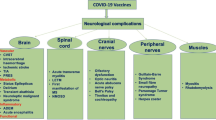Abstract
Acquired diseases classically associated with VGKC-complex antibodies include peripheral nerve hyperexcitability (PNH), Morvan’s syndrome, limbic encephalitis (LE), and epilepsy. However, not all such patients have VGKC-complex antibodies and antibodies have been reported in patients without a defined immune-mediated syndrome. To analyse the clinical relevance of positive VGKC-complex antibodies requested on the basis of initial clinical suspicion. We retrospectively analysed patients with positive VGKC-complex antibodies (>100 pM) referred to our institution between 2001 and 2011. 1,614 VGKC-complex assays were performed in 1,298 patients. Titres >100 pM were detected in 57/1,298 (4 %) patients. A classic VGKC-complex channelopathy (60 %) was associated with VGKC-complex antibody titres >400 pM (p = 0.0004). LGI1 or CASPR2 antibodies were only detected in classic VGKC-complex channelopathies (LE; n = 3/4 and PNH; n = 1/5). VGKC-complex antibody titres <400 pM were seen with PNH (n = 15/22; 68 %) but also a heterogeneous range of central and/or peripheral nervous system disorders. Electromyography was supportive of PNH in 65 % of cases and symptomatic treatment was beneficial in 46 % of patients. Irrespective of titre, the rate of malignancy in patients with VGKC-complex antibodies was higher than the age-matched national incidence of malignancy (OR 19.9, 95 % CI 8.97–44.0 p<0.0001). Clinical phenotyping and antibody titres >400 pM can help determine VGKC-complex antibody relevance. Antibody titres <400 pM are associated with PNH but also a more heterogeneous clinical spectrum. The antibody association in the latter is of doubtful clinical relevance. The rate of malignancy was significantly higher than the national incidence irrespective of titre.



Similar content being viewed by others
References
Eunson LH, Rea R, Zuberi SM, Youroukos S, Panayiotopoulos CP, Liguori R, Avoni P, McWilliam RC, Stephenson JB, Hanna MG, Kullmann DM, Spauschus A (2000) Clinical, genetic, and expression studies of mutations in the potassium channel gene KCNA1 reveal new phenotypic variability. Ann Neurol 48:647–656
Browne DL, Gancher ST, Nutt JG, Brunt ER, Smith EA, Kramer P, Litt M (1994) Episodic ataxia/myokymia syndrome is associated with point mutations in the human potassium channel gene, KCNA1. Nat Genet 8:136–140
Zuberi SM, Eunson LH, Spauschus A, De Silva R, Tolmie NW, McWilliam RC, Stephenson JB, Kullmann DM, Hanna MG (1999) A novel mutation in the human voltage-gated potassium channel gene (Kv1.1) associates with episodic ataxia type 1 and sometimes with partial epilepsy. Brain 122:817–825
Irani SR, Alexander S, Waters P, Kleopa KA, Pettingill P, Zuliani L, Peles E, Buckley C, Lang B, Vincent A (2010) Antibodies to Kv1 potassium channel-complex proteins leucine-rich, glioma inactivated 1 protein and contactin-associated protein-2 in limbic encephalitis, Morvan’s syndrome and acquired neuromyotonia. Brain 133:2734–2748
Buckley C, Oger J, Clover L, Tüzün E, Carpenter K, Jackson M, Vincent A (2001) Potassium channel antibodies in two patients with reversible limbic encephalitis. Ann Neurol 50:73–78
Vincent A, Buckley C, Schott JM, Baker I, Dewar K, Detert N, Clover L, Parkinson A, Bien C, Omer S, Lang B, Rossor M, Palace J (2004) Potassium channel antibody-associated encephalopathy: a potentially immunotherapy-responsive form of limbic encephalitis. Brain 127:701–712
Olberg H, Haugen M, Storstein A, Vedeler CA (2013) Neurological manifestations related to level of voltage-gated potassium channel antibodies. J Neurol Neurosurg Psychiatry 84:941–943
Paterson RW, Zandi MS, Armstrong R, Vincent A, Schott JM (2014) Clinical relevance of positive voltage-gated potassium channel (VGKC)-complex antibodies: experience from a tertiary referral centre. J Neurol Neurosurg Psychiatry 85:625–630
Klein CJ, Lennon VA, Aston PA, MCcKeon A, O’Toole O, Quek A, Pittock SJ (2013) Insights from LGI1 and CASPR2 potassium channel complex autoantibody subtyping. JAMA Neurol 70:229–234
Hart IK, Maddison P, Newsom-Davis J, Vincent A, Mills KR (2002) Phenotypic variants of autoimmune peripheral nerve hyperexcitability. Brain 125:1887–1895
Cancer Research UK (2014) Cancer incidence in the UK in 2011. http://publications.cancerresearchuk.org/downloads/Product/CS_REPORT_INCIDENCE.pdf. Accessed 25 Oct 2014
Wong SH, Saunders MD, Larner AJ, Das K, Hart IK (2010) An effective immunotherapy regimen for VGKC antibody-positive limbic encephalitis. J Neurol Neurosurg Psychiatry 81:1167–1169
Ohkawa T, Fukata Y, Yamasaki M, Miyazaki T, Yokoi N, Takashima H, Watanabe M, Watanabe O, Fukata M (2013) Autoantibodies to epilepsy-related LGI1 limbic encephalitis neutralize LGI1-ADAM22 interaction and reduce synaptic AMPA receptors. J Neurosci 33:18161–18174
Irani SR, Pettingill P, Kleopa KA, Schiza N, Waters P, Mazia C, Zuliani L, Watanabe O, Lang B, Buckley C, Vincent A (2012) Morvan syndrome: clinical and serological observations in 29 cases. Ann Neurol 72:241–255
Fujita K, Yuasa T, Watanabe O, Takahashi Y, Hashiguchi S, Adachi K, Izumi Y, Kaji R (2012) Voltage-gated potassium channel complex antibodies in Creutzfeldt–Jakob disease. J Neurol 259:2249–2250
Angus-Leppan H, Rudge P, Mead S, Collinge J, Vincent A (2013) Autoantibodies in sporadic Creutzfeldt–Jakob disease. JAMA Neurol 70:919–992
Rossi M, Mead S, Collinge J, Rudge P, Vincent A (2014) Neuronal antibodies in patients with suspected or confirmed sporadic Creutzfeldt–Jakob disease. JNNP. doi:10.1136/jnnp-2014-308695
Acknowledgments
The authors would like to thank Dr. Patrick Waters for providing the constructs used in the CBAs. The authors would also like to thank both Dr. Patrick Waters and Dr. Ester Coutinho for their helpful comments.
Conflicts of interest
SH is funded by a Watney/Myasthenia Gravis Association/Oxford Biomedical Research Centre Fellowship. AV and the University of Oxford hold patents and receive royalties and payments for autoantibody tests including VGKC-complex antibodies. SHW, PP, DO, and MS declare no conflicts of interest.
Ethical standard
The study was approved by the local institutional clinical governance and audit board and performed in accordance with the Helsinki Declaration of 1975, as revised in 2000 and 2008.
Author information
Authors and Affiliations
Corresponding author
Rights and permissions
About this article
Cite this article
Huda, S., Wong, S.H., Pettingill, P. et al. An 11-year retrospective experience of antibodies against the voltage-gated potassium channel (VGKC) complex from a tertiary neurological centre. J Neurol 262, 418–424 (2015). https://doi.org/10.1007/s00415-014-7588-0
Received:
Revised:
Accepted:
Published:
Issue Date:
DOI: https://doi.org/10.1007/s00415-014-7588-0




